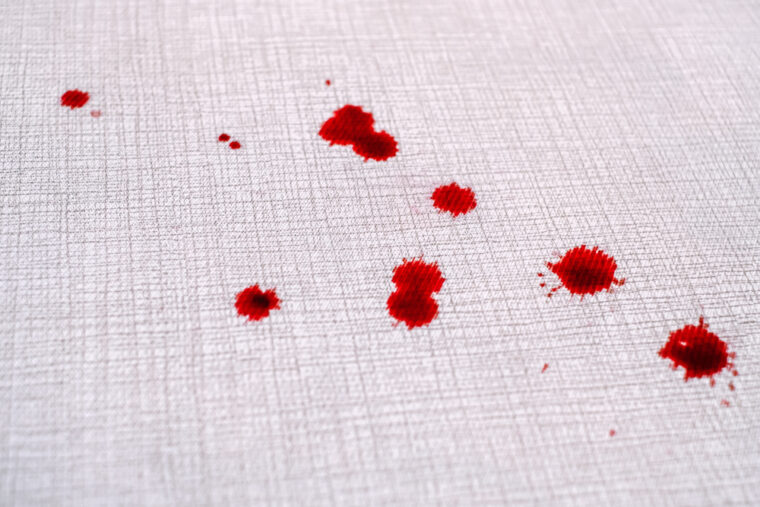
It can be stressful to discover that your cat is leaving a trail of blood on the floor! Because there could be as many potential causes as there are cells of blood in the body (only slightly exaggerating, of course), below you’ll find different broad categories broken down into seven body systems. Within each of these systems, there will be some common, various causes of blood loss in a cat.
One thing that never ceases to amaze me as a veterinarian is the number of things that cats can get or get into!
Is This an Emergency?
It could be. This is hard to know as each individual situation could range from something as minor as a little scratch, to a major life-threatening health issue such as a bleeding disorder, to anything in between. If your cat will safely allow you to take a look over their body, this is a good first step. Being a detective, as well as reviewing any other signs of how they are acting in the big picture of things can all be helpful.
If you are unable to find an obvious cause of the bleeding or there are other troubling signs in addition to the sudden appearance of blood, a prompt veterinary visit is in order.
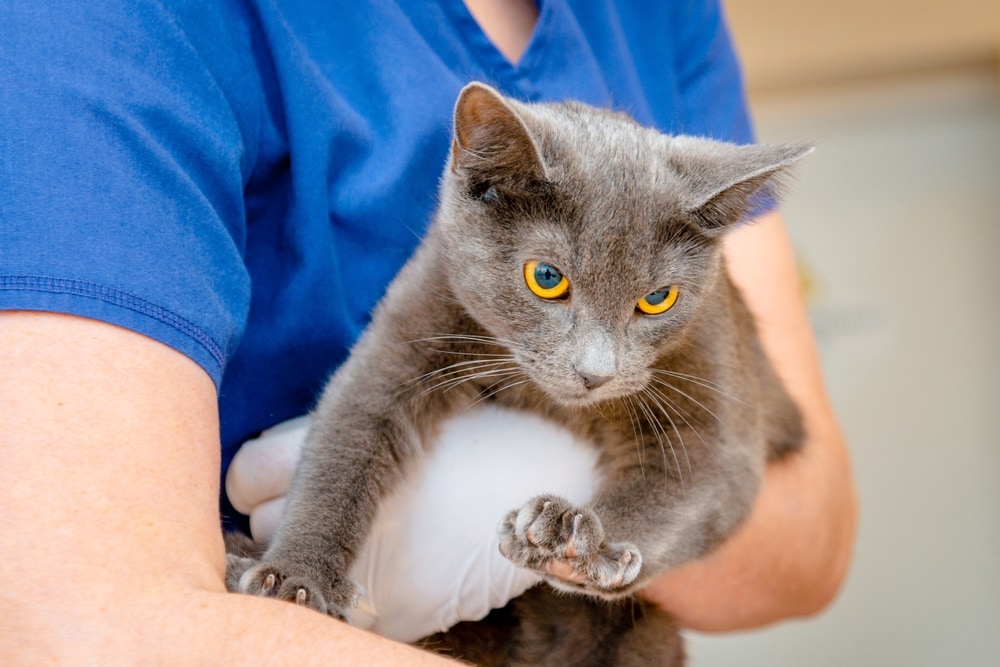
The 7 Reasons for a Cat Leaving Blood Drops on the Floor
1. Injury
An injury or wound somewhere on the body, ranging from a superficial skin wound all the way to deeper muscle trauma, could cause the appearance of blood on the floor. There could be any number of causes for an injury, including common culprits such as a simple scrape, scratching due to itchiness, a large, ulcerated tumor, or a fight with another animal. Even self-mutilation could come into play, whether due to a medical cause such as fleas or allergies, or even because of anxiety.
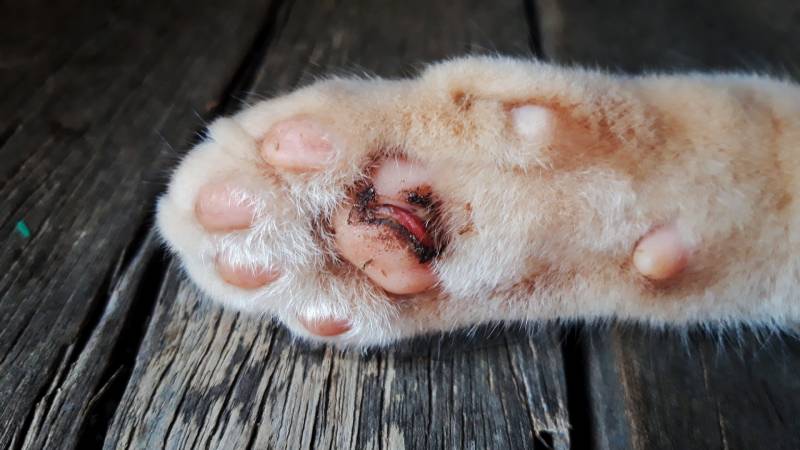
2. Ears, Nose, and Mouth
There are many areas on a cat’s face from which blood could potentially appear. The mouth can have severe dental disease or an abscess (a swollen area of infection with pus and/or blood). Bloody nasal discharge from a polyp or an upper respiratory infection could come from the nose. The ear could have an infection with bacteria, yeast, or parasites such as ear mites which result in intense itching and subsequent blood loss.
In addition, an ear hematoma may appear in such circumstances, which in this case is where fluid and blood swell on the inside surface of the ear flap due to excess head/ear shaking or scratching.
3. Urinary Tract
The urinary tract system has many medical causes for hematuria or blood in the urine. This could also cause blood to drip directly from the urinary tract while the cat is urinating or attempting to urinate. Some of these diseases could include a urinary tract infection, urinary calculi (also referred to as stones) that can occur anywhere in the urinary tract system, urinary obstruction, or feline interstitial cystitis (FIC) which is inflammation of the bladder due to an unknown cause.
Cancer within the urinary tract system or an infectious cause such as leptospirosis or feline infectious peritonitis (FIP) could also be potential reasons.
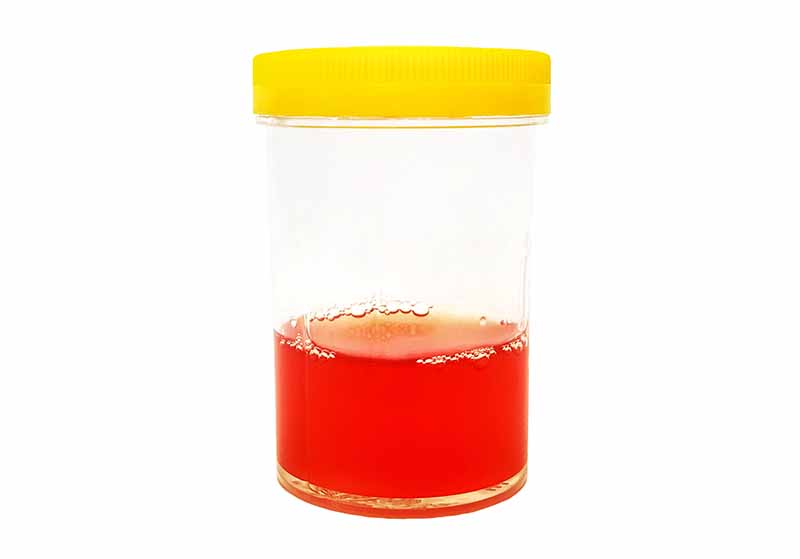
4. Reproductive Tract
The reproductive tract system, while different from the urinary tract, could also be the source of bleeding. This could be due to an “open” pyometra (bacterial infection of the uterus) which contains pus, and often blood, that is expelled from the body. It should be noted that, unlike dogs, cats do not typically have blood present during their normal estrus (also known as their heat) cycle, and such bleeding would be considered abnormal and likely of medical concern.
For pregnant cats going into labor, a small amount of blood-tinged discharge may be normal, but a significant amount of blood may signify problems such as dystocia (a difficult birthing process) or loss of the kittens.
5. Bowel Problems
A cat’s anus could be the source of the blood. Hematochezia is the medical term for passing fresh blood from the anus, typically in or with the stool. There are numerous potential causes for this phenomenon which may include constipation with straining, cancer, or inflammation. Inflammation could be caused by irritable bowel syndrome, dietary indiscretion (eating something they are not supposed to), numerous infectious parasites, or even food allergies. Other additional causes might include a foreign body (such as when a cat eats a toy or other small object), a perianal fistula (anus or area around it are inflamed), rectal prolapse, or a rectal polyp or stricture.
Anal gland problems, while rarer in cats than dogs, could also be a possible cause which might include an anal gland abscess (infection) or even cancer of the glands.
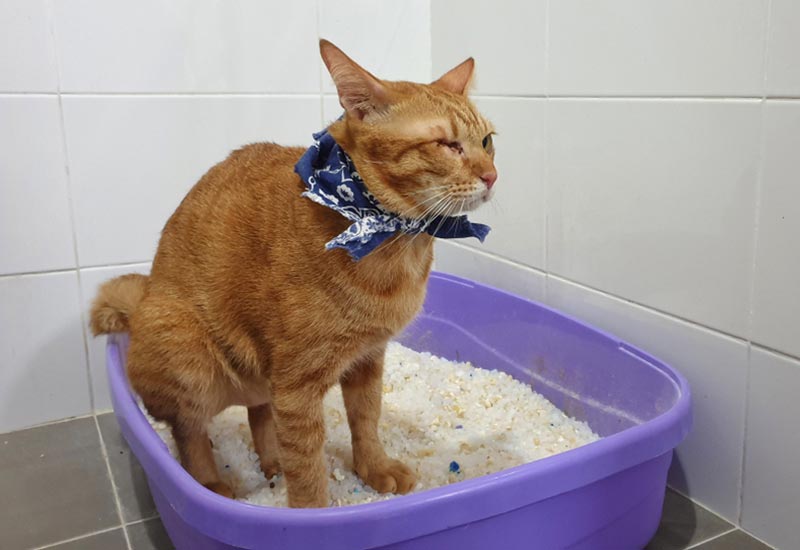
6. A Foot or Nailbed Injury
A foot or nailbed injury could be the source of the blood. A nail avulsion (the outer shell of the nail being torn off potentially exposing the blood vessel and nerve underneath) could occur due to physical trauma, a fight, getting their nail caught, etc. My own cat did this and made quite the dripping bloody mess all over a white couch!
Alternatively, a cat could have other injuries such as a nail growing into a pad or injury due to a scraped-up pad. One of my beloved childhood cats once climbed up a brick wall into an open second-story window and he experienced significant bleeding from his paw pads after that effort!
7. Bleeding Disorders
Observed bleeding could also be due to bleeding disorders. There are three categories of bleeding disorders that could result in irregular bleeding and the cause for any of these could either be congenital (born with the condition) or acquired later in life. The categories where problems could go wrong and cause excess bleeding include:
Irregular bleeding may manifest in different ways depending on the category in which the problem lies. For example, problems with platelets could show up as nosebleeds, bleeding into the bowls (which causes darker than normal stool), or longer than normal bleeding at an injection site or areas within surgery. In contrast, problems with blood clotting proteins may result in blood that pools in the body such as in the joints, body cavities, or in hematomas (pockets of blood outside the vessels in the tissues).
One example of an acquired cause of a bleeding disorder involving the blood clotting proteins could be the ingestion of rodenticide, or rat poison.
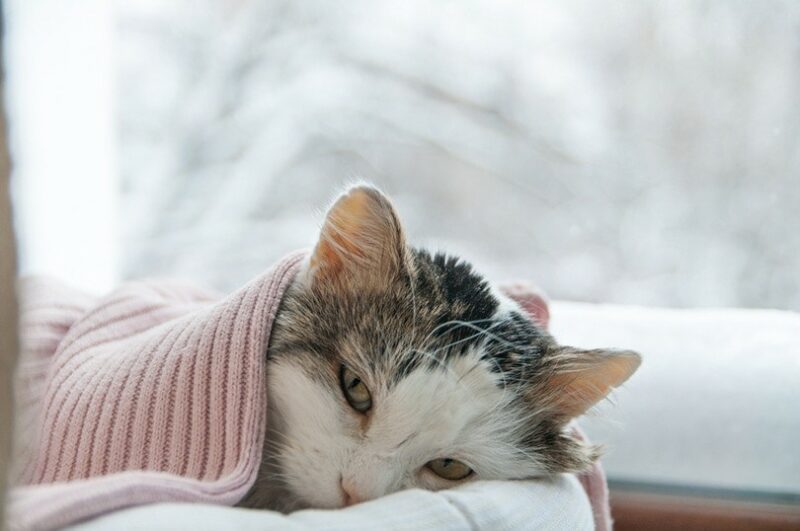
Conclusion
Suddenly seeing blood drops on the floor from your cat can be a worrisome event! Using the above list of potential causes, and observing what is going on with your cat, you may be able to piece together some clues to get some ideas on the source of the bleeding.
If not, or if the cause requires medical attention, your cat’s veterinarian is your best bet for answers and solutions to this problem.
Featured Image Credit: HalynaRom, Shutterstock








